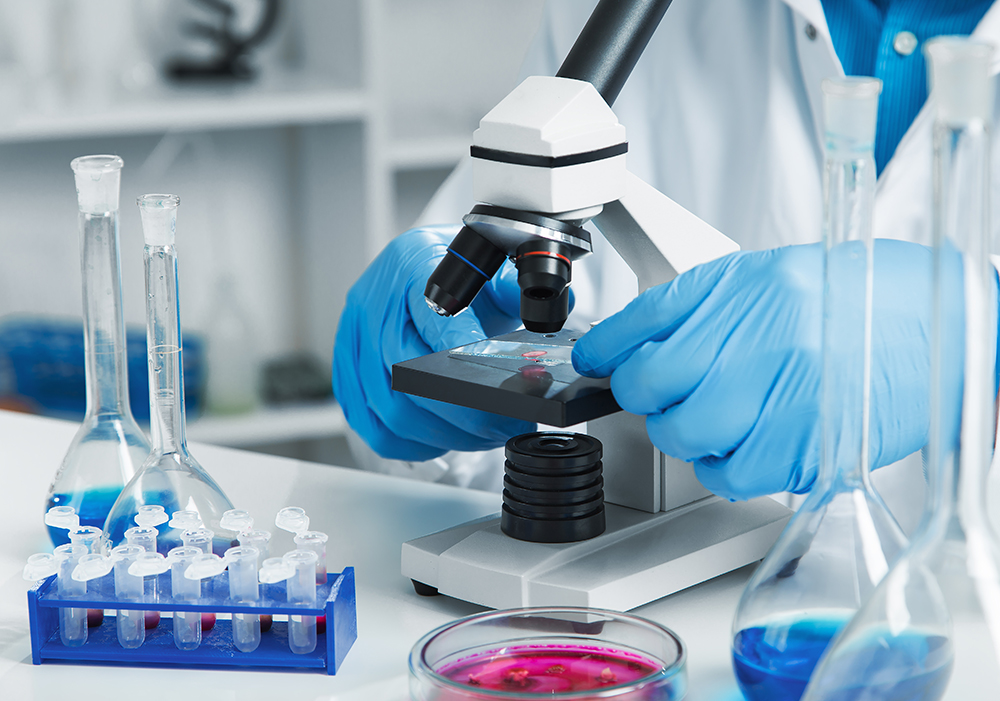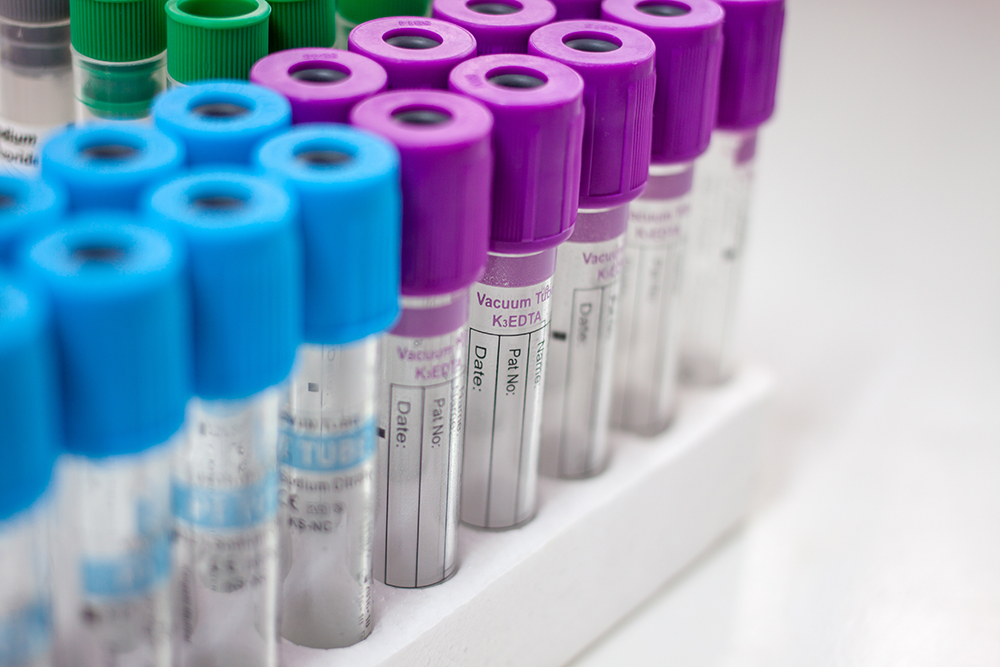


QUICK ENQUIRY
LEUKEMIA
Leukemia is a type of cancer that affects the blood and bone marrow.
Leukemia begins in a cell in the bone marrow. The cell undergoes a change and becomes a type of leukemia cell. Once the marrow cell undergoes a leukemic change, the leukemia cells may grow and survive better than normal cells. Over time, the leukemia cells crowd out or suppress the development of normal cells. The rate at which leukemia progresses and how the cells replace the normal blood and marrow cells are different with each type of leukemia.
After diagnosis and treatment, many people with leukemia live many good, quality years.
Types of Leukemia
Acute Lymphoblastic Leukemia (ALL) is a cancer of the bone marrow and blood that progresses rapidly without treatment and does not have a clear cause.
ALL results from either an acquired or a genetic injury to the DNA (genetic material) of a developing stem cell in the bone marrow. This damaged cell becomes a leukemic cell and multiplies uncontrollably into billions of cells called leukemic lymphoblasts. As a result, the number of healthy blood cells (red cells, white cells and platelets) is usually lower than normal.
Acute myeloid leukemia (AML) is a cancer of the bone marrow and the blood that progresses rapidly without treatment. It affects mostly cells that aren’t fully developed- these cells can’t carry out their normal functions.
It can be a difficult disease to treat, however researchers are studying new approaches to AML therapy in clinical trials.
The DNA (genetic material) of a developing stem cell in the bone marrow is damaged. This is called an “acquired mutation.” This damaged cell becomes a leukemic cell and multiplies into billions of cells called leukemic blasts. As a result, the number of healthy blood cells (red cells, white cells and platelets) is usually lower than normal.
Chronic lymphocytic leukemia (CLL) is a type of blood cancer that begins in the bone marrow that can progress either slowly or quickly depending on the form it takes.
The DNA (genetic material) of a developing stem cell in the bone marrow is damaged. This is called an “acquired mutation.” This damaged cell becomes a leukemic cell and multiplies into many CLL cells. The CLL cells grow and survive better than normal cells. CLL doesn’t completely interfere with the development of mature red cells, white cells and platelets. Therefore, CLL is generally less severe than acute leukemia. As a result, the number of healthy blood cells (red cells, white cells and platelets) is usually lower than normal.
Chronic myeloid leukemia (CML) is a cancer of the bone marrow and blood. CML is usually diagnosed in its chronic phase when treatment is very effective for most patients. CML has three phases.
The DNA (genetic material) of a developing stem cell in the bone marrow is damaged. This is called an “acquired mutation.” This damaged cell becomes a leukemic cell and multiplies into many CML cells. The CML cells grow and survive better than normal cells.
CML doesn’t completely interfere with the development of mature red cells, white cells and platelets. Therefore, chronic phase CML is generally less severe than acute leukemia. As a result, the number of healthy blood cells (red cells, white cells and platelets) is usually lower than normal.
Hairy cell leukemia (HCL) is a type of blood cancer that begins in the bone marrow. It is a rare type of chronic leukemia that gets its name from the short, thin projections that look like hair on its cells.
The DNA (genetic material) of a developing stem cell in the bone marrow is damaged. This is called an “acquired mutation.” This abnormal change occurs in a white cell called a B lymphocyte.
B lymphocytes normally produce antibodies to help fight infections. Hairy cells tend to accumulate in the bone marrow, liver and spleen. Even though hairy cell leukemia affects the white cells, the lymph nodes usually don’t enlarge. Hairy cells multiply uncontrollably and crowd out normal white cells, red cells and platelets. As a result, the number of healthy blood cells (red cells, white cells and platelets) is usually lower than normal.
Chronic myelomonocytic leukemia (CMML) is an uncommon blood cancer that has features of two other types of blood cancers. For this reason, the World Health Organization (WHO) classifies CMML as a mixed myelodysplastic/myeloproliferative disease. It generally affects older adults, is diagnosed in twice as many males than females and has been reported in only a small number of older children and younger adults.
CMML is considered a clonal disorder, which means that it starts with one or more changes (mutations) to the DNA of a stem cell in the bone marrow that multiplies uncontrollably. Stem cells form blood cells (white blood cells, red blood cells and platelets).
The change to the stem cell affects the normal development of a type of white blood cell called a monocyte. Monocytes arise from immature blood-forming cells called myeloblasts and myelocytes.
The myeloblasts and myelocytes accumulate in the marrow and other organs and interfere with normal production of monocytes and other types of blood cells, including red blood cells and platelets.
Juvenile myelomonocytic leukemia (JMML) is an uncommon blood cancer that can progress rapidly without treatment that has features of two other types of blood cancers. For this reason, the World Health Organization (WHO) classifies JMML as a mixed myelodysplastic/myeloproliferative disease. It is most commonly diagnosed in infants and children younger than 6 years old. It is often diagnosed in infants between ages 3 months and 12 months but rarely diagnosed in newborns.
The DNA (genetic material) of a developing stem cell in the bone marrow is damaged. This is called an “acquired mutation.” The abnormal change(s) affects a white blood cell called a monocyte.
Normally, monocytes make up about 5 percent to 10 percent of cells in our blood. Monocytes, along with other white cells called neutrophils, are in charge of ingesting and killing microbes (germs) in the blood. When monocytes leave the blood and enter the tissues, they can attack invading organisms and help combat infection and assist other blood cells such as lymphocytes in carrying out their immune function.
In JMML, monocytes multiply uncontrollably and crowd out normal white blood cells, red blood cells and platelets. Usually these monocytes appear abnormal and not fully mature. As a result, the number of healthy blood cells (red blood cells, white blood cells and platelets) is usually lower than normal.
Large granular lymphocytic (LGL) leukemia is a type of chronic leukemia affecting white blood cells called “lymphocytes.” Lymphocytes are part of the body’s immune system and help fight certain infections. LGL leukemia is characterized by enlarged lymphocytes, containing noticeable granules, which can be seen when the blood is examined under the microscope. There are two types of LGL leukemia: T-cell (T-LGL) and natural killer cell (NK-LGL). Each type may be chronic (slow-growing) or aggressive (fast-growing).
The frequency of T-cell and NK-cell LGL leukemia ranges from 2 to 5 percent of chronic lymphoproliferative diseases. LGL leukemia affects both men and women, and the median age at diagnosis is 60 years. Less than a quarter of patients are younger than 50 years.
Chronic T-cell and NK-cell LGL leukemia patients require similar treatment. For some patients, a watch and wait approach may be considered; however, the majority of patients will eventually require treatment. For patients on watch and wait, indications to begin treatment include moderate to severe neutropenia, symptomatic or transfusion-dependent anemia and associated auto-immune conditions, such as rheumatoid arthritis, requiring therapy.
Blastic plasmacytoid dendritic cell neoplasm (BPDCN), previously known as natural killer (NK) cell leukemia/lymphoma, is categorized by the World Health Organization (4th edition, 2008) under acute myeloid leukemia (AML). Most often, BPDCN presents with features of both lymphoma and leukemia. There are little data about BPDCN and there is no established treatment. The average age at diagnosis is 60 to 70 years. There are more men than women who are diagnosed with BPDCN.
Treatment sometimes includes therapies that are used for AML, acute lymphoblastic leukemia (ALL), or lymphoma.
The length for which a patient responds to these treatments is usually short. After a relapse, second remissions with conventional chemotherapy are difficult to achieve. Allogeneic hematopoietic stem cell transplant (allo-HCT), especially if offered in first remission, may result in longer remissions. The current recommendation is for BPDCN patients to be evaluated for an allo-HCT as soon as possible and to begin searching for a donor.
Treatment of Leukemia
Treatment for your leukemia depends on many factors. Your doctor determines your leukemia treatment options based on your age and overall health, the type of leukemia you have, and whether it has spread to other parts of your body.
Common treatments used to fight leukemia include:
Chemotherapy. Chemotherapy is the major form of treatment for leukemia. This drug treatment uses chemicals to kill leukemia cells.
Depending on the type of leukemia you have, you may receive a single drug or a combination of drugs. These drugs may come in a pill form, or they may be injected directly into a vein.
Biological therapy. Biological therapy works by using treatments that help your immune system recognize and attack leukemia cells.
Targeted therapy. Targeted therapy uses drugs that attack specific vulnerabilities within your cancer cells.
For example, the drug imatinib (Gleevec) stops the action of a protein within the leukemia cells of people with chronic myelogenous leukemia. This can help control the disease.
Radiation therapy. Radiation therapy uses X-rays or other high-energy beams to damage leukemia cells and stop their growth. During radiation therapy, you lie on a table while a large machine moves around you, directing the radiation to precise points on your body.
You may receive radiation in one specific area of your body where there is a collection of leukemia cells, or you may receive radiation over your whole body. Radiation therapy may be used to prepare for a stem cell transplant.
Stem cell transplant. A stem cell transplant is a procedure to replace your diseased bone marrow with healthy bone marrow.
Before a stem cell transplant, you receive high doses of chemotherapy or radiation therapy to destroy your diseased bone marrow. Then you receive an infusion of blood-forming stem cells that help to rebuild your bone marrow.
You may receive stem cells from a donor, or in some cases you may be able to use your own stem cells. A stem cell transplant is very similar to a bone marrow transplant.
For more information on leukemia please do not hesitate to get in touch with Dr Shafeek through our appointments page.

